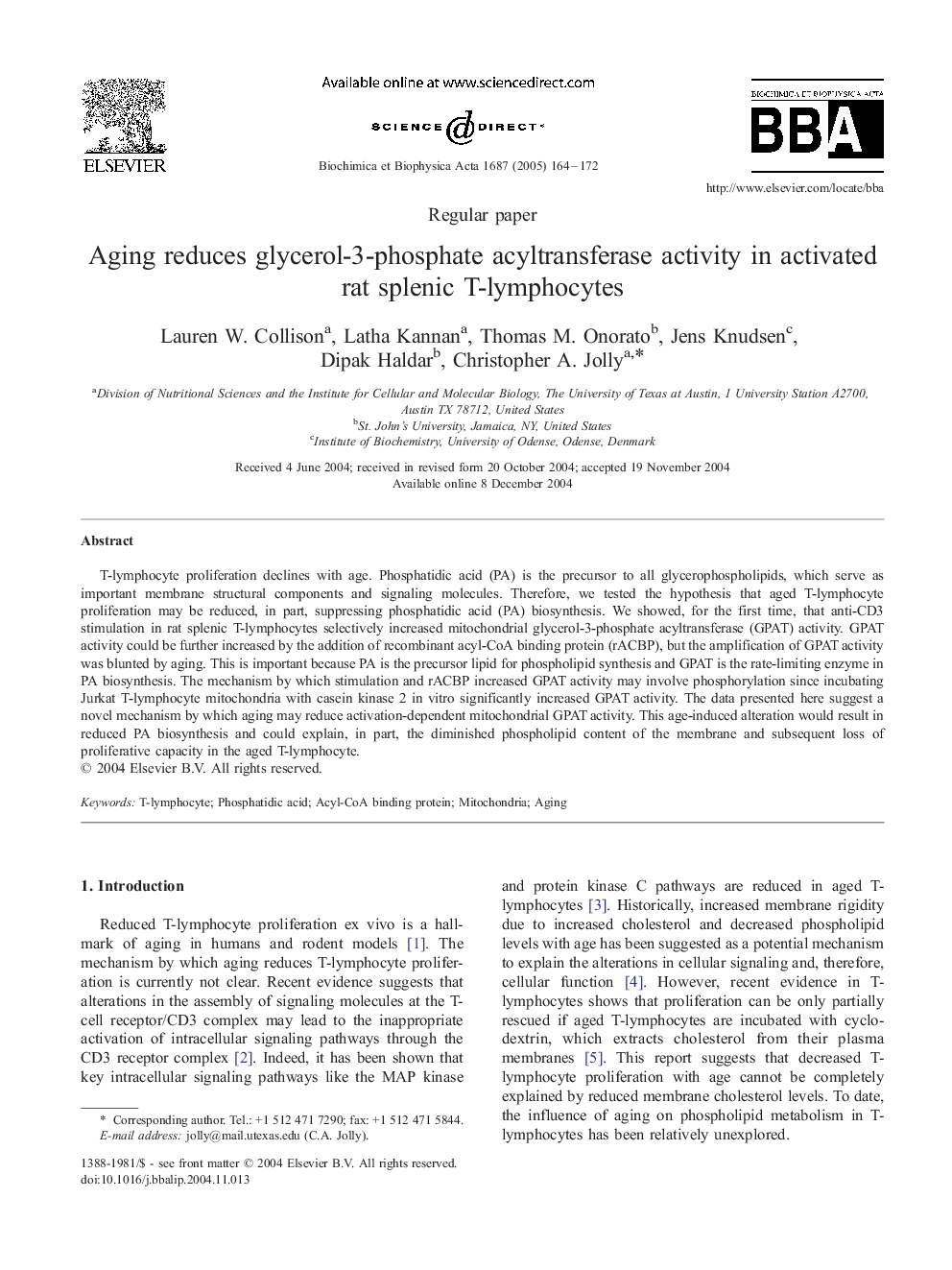| Article ID | Journal | Published Year | Pages | File Type |
|---|---|---|---|---|
| 9886625 | Biochimica et Biophysica Acta (BBA) - Molecular and Cell Biology of Lipids | 2005 | 9 Pages |
Abstract
T-lymphocyte proliferation declines with age. Phosphatidic acid (PA) is the precursor to all glycerophospholipids, which serve as important membrane structural components and signaling molecules. Therefore, we tested the hypothesis that aged T-lymphocyte proliferation may be reduced, in part, suppressing phosphatidic acid (PA) biosynthesis. We showed, for the first time, that anti-CD3 stimulation in rat splenic T-lymphocytes selectively increased mitochondrial glycerol-3-phosphate acyltransferase (GPAT) activity. GPAT activity could be further increased by the addition of recombinant acyl-CoA binding protein (rACBP), but the amplification of GPAT activity was blunted by aging. This is important because PA is the precursor lipid for phospholipid synthesis and GPAT is the rate-limiting enzyme in PA biosynthesis. The mechanism by which stimulation and rACBP increased GPAT activity may involve phosphorylation since incubating Jurkat T-lymphocyte mitochondria with casein kinase 2 in vitro significantly increased GPAT activity. The data presented here suggest a novel mechanism by which aging may reduce activation-dependent mitochondrial GPAT activity. This age-induced alteration would result in reduced PA biosynthesis and could explain, in part, the diminished phospholipid content of the membrane and subsequent loss of proliferative capacity in the aged T-lymphocyte.
Related Topics
Life Sciences
Biochemistry, Genetics and Molecular Biology
Biochemistry
Authors
Lauren W. Collison, Latha Kannan, Thomas M. Onorato, Jens Knudsen, Dipak Haldar, Christopher A. Jolly,
